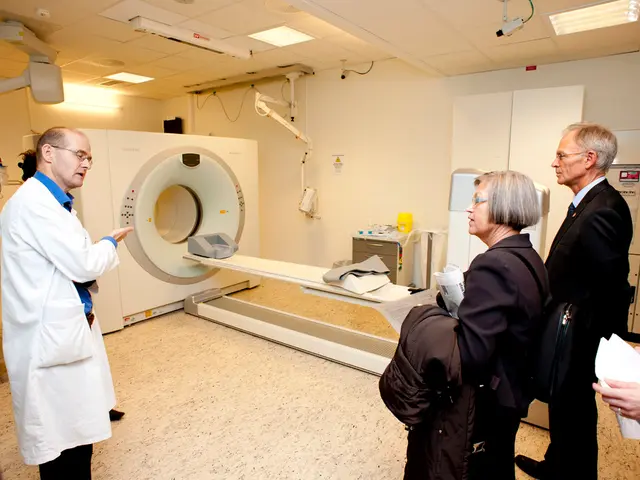Scientists have successfully unearthed evidence verifying that our brains possess a waste removal system
In a groundbreaking discovery, scientists have uncovered a lymphatic drainage system in the human brain, shedding light on the complex interplay between waste clearance, immune responses, and neurological health. This revelation, which significantly advances our understanding of neurological diseases such as Alzheimer's, multiple sclerosis (MS), depression, and brain fog, opens new avenues for developing treatments that target the brain’s lymphatic and glymphatic systems.
The brain’s lymphatic system plays a crucial role in clearing toxic proteins like beta-amyloid and tau, which accumulate in Alzheimer's. Enhancing lymphatic and glymphatic drainage may reduce these toxic buildups, potentially slowing neurodegeneration and cognitive decline.
For individuals living with MS, the presence of a lymphatic system in the brain offers insights into autoimmune mechanisms and enables targeted immunotherapies to modulate pathological immune responses.
Depression and brain fog may also be linked to neuroinflammation and inefficient clearance of metabolic waste in the brain. Improving lymphatic drainage could alleviate these conditions by restoring homeostasis in brain fluid dynamics and immune signalling.
Therapeutic implications of this discovery are promising, with treatments aiming to boost lymphatic and glymphatic function showing potential in protecting injured brain tissue, reducing cerebral edema, and resetting immune balance. This suggests possible new interventions for various neurological conditions rooted in impaired brain clearance and inflammation.
The discovery of brain lymphatic vessels was confirmed using gadobutrol, a contrast agent injected into healthy volunteers. High-resolution, three-dimensional renderings revealed curved, tubular channels running parallel to the large blood vessels of the dura. These lymphatic vessels in the dura mater drain waste-laden cerebrospinal fluid (CSF) from the brain into the broader lymphatic system.
Some neurologists are exploring whether light-based stimulation or low-frequency sound waves could stimulate lymphatic flow in the dura, potentially opening a new type of non-invasive therapy.
The human brain has its own lymphatic drainage system, as confirmed by recent imaging and molecular evidence. Understanding the function of lymphatic vessels in the brain could yield new treatments or ways to slow disease progression for conditions like multiple sclerosis.
Clinical trials are in development to test therapies that could enhance lymphatic drainage, including physical techniques, pharmacological agents, and behavioural strategies. The glymphatic system, a separate system from the lymphatic vessels, helps move CSF through the brain during deep sleep.
Disruptions at any point in this chain could result in the accumulation of neurotoxic materials, leading to inflammation and disease. The discovery of the brain's lymphatic network dismantles the assumption that the brain is isolated from the immune system.
Failures in the brain's lymphatic system may explain why beta-amyloid plaques, one of the hallmarks of Alzheimer’s disease, build up. Adjusting MRI parameters allowed researchers to visualise previously hidden lymphatic vessels in the human brain. These channels were not part of the vascular system, as confirmed by the use of a second dye made of large molecules that couldn't escape blood vessels.
The same structures were confirmed in several human brains and marmosets, with physical verification in dissected brain tissue. These lymphatic vessels run through the dura mater, the brain's tough outer membrane, and function much like those in the rest of the body.
This discovery reframes many neurological diseases as disorders involving the brain’s fluid and immune clearance systems, shifting research and treatment strategies from solely focusing on neurons to also targeting lymphatic health and function within the brain.
The discovery of the brain's lymphatic system indicates promising avenues for medical treatments related to neurological disorders such as Alzheimer's, multiple sclerosis, depression, and brain fog, as it offers insights into the clearance of toxic proteins and improves our understanding of these conditions.
In addition, this lymphatic system may provide a target for new immunotherapies, potentially leading to the development of treatments for autoimmune-related neurological conditions like multiple sclerosis.








